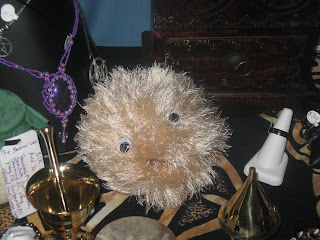The history of the crystal ball can be traced as far back as to the Medieval Period in central Europe (between 500 – 1500 AD) and in Scandinavia (1050 – 1500 AD). There have always been fortunetellers throughout history as well. Religious sciences tell us, for example, about Apollo’s (the Greek God of prophesy) oracle priestess, Pythia who had powers (1500 B.C.). Used by Seers, Fortunetellers, Psychics, and Sorcerers, the Crystal Ball seems to be one of the most well-known and popular forms of scrying, as well as a divination tool. Scrying is the name given to the ancient technique of gazing into an object such as a crystal ball or a bowl of water. It is usually physically, ritually or spiritually, cleansed before each use for purification purposes. When a crystal is used, scrying is known as crystallomancy. Using crystals in the divination of one’s past, present, and future traditionally played a key role in the decision-making process of many powerful leaders throughout history. One of the most notable was King Arthur, who sought out the advice and prophecies of Merlin the Magician. In more recent history, Nancy Reagan, the first lady of then President Ronald Reagan, avidly used psychics to help plan her husband’s domestic & foreign affairs. One of the earliest uses of crystals in scrying comes from the Druids, who used Beryllium Aluminum Silicate (Beryl), a natural gemstone whose characteristics range from transparent to translucent. Scottish Highlanders termed these objects “stones of power”. Early crystal balls were made from Beryl, later replaced by spheres made of rock crystal. The reason crystals in particular became important tools for scrying and other metaphysical aspects is because of their inherent characteristics of transparency and regularity of their patterns, called symmetry. Additionally, the energetic fields of crystals influence what the scryer “sees” on a very subtle and often esoteric level.
Sunday, June 20, 2010
Thursday, June 17, 2010
What Is That?
Walking into my Display room I noticed something was different.
Sure enough there were these little fuzzy creatures all over the place.
They made themselves right at home, This is no good! So now up for adoption are these
fuzzy little critters!
Introducing the new members of The Sacred Oak
The Invasion!
Hiding in the Bath Salts!
Amongst the altar Items!
Amongst The Milk Bath!
Amongst the Jewelry!
I see you sitting there!
Trying to be sneaky eh?
Just sitting around
Nice place can I move in?
What?
"You dont see me"
"Shh, maybe the human wont notice us!"
Too late Cerridwen Found you!
The rest are up for adoption, They come with Feeding and care instructions as well as an Adoption Certificate. Only a few have been found get yours soon!
Sunday, June 13, 2010
Oils, Soaps and more!
Well I finally Finished adding Oils up on the website!
Tons of different scents in 1 dram bottles each bottle costs $2.50
We now have a custom ritual soap listing. For those who want to make there own soap scent choices as well as color!
These were one of our top sellers when we had our Etsy shop!
Need small Guest size soaps? No problem those listings are coming very soon keep your eyes out for them!
Custom Egyptian Necklaces now available. Request yours today and beet the up coming holiday rush!
Blessed be and keep your eyes out for new things!
Tuesday, June 1, 2010
Litha/Midsummer Solstice
Although the name Litha is not well attested, it may come from Saxon tradition -- the opposite of Yule. On this longest day of the year, light and life are abundant. At mid-summer, the Sun God has reached the moment of his greatest strength. Seated on his greenwood throne, he is also lord of the forests, and his face is seen in church architecture peering from countless foliate masks.
The Christian religion converted this day of Jack-in-the-Green to the Feast of St. John the Baptist, often portraying him in rustic attire, sometimes with horns and cloven feet (like the Greek Demi-God Pan)
Midsummer Night's Eve is also special for adherents of the Faerie faith. The alternative fixed calendar date of June 25 (Old Litha) is sometimes employed by Covens. The name Beltane is sometimes incorrectly assigned to this holiday by some modern traditions of Wicca, even though Beltane is the Gaelic word for May.
Traditional Foods:
Garden fresh fruits and vegetables are made into a variety of dishes and eaten by Pagan's who choose to celebrate this day.
Herbs and Flowers:
Mugwort, Vervain, Chamomile, Rose, Honeysuckle, Lily, Oak, Lavender, Ivy, Yarrow, Fern, Elder, Wild Thyme, Daisy, Carnation.
Incense:
Lemon, Myrrh, Pine, Rose, Wisteria.
Woods Burned:
Oak
Sacred Gemstone:
Emerald
Special Activities:
An Ideal time to reaffirm your vows to the Lord and Lady or your dedication to following the old traditions.
Subscribe to:
Posts (Atom)


















